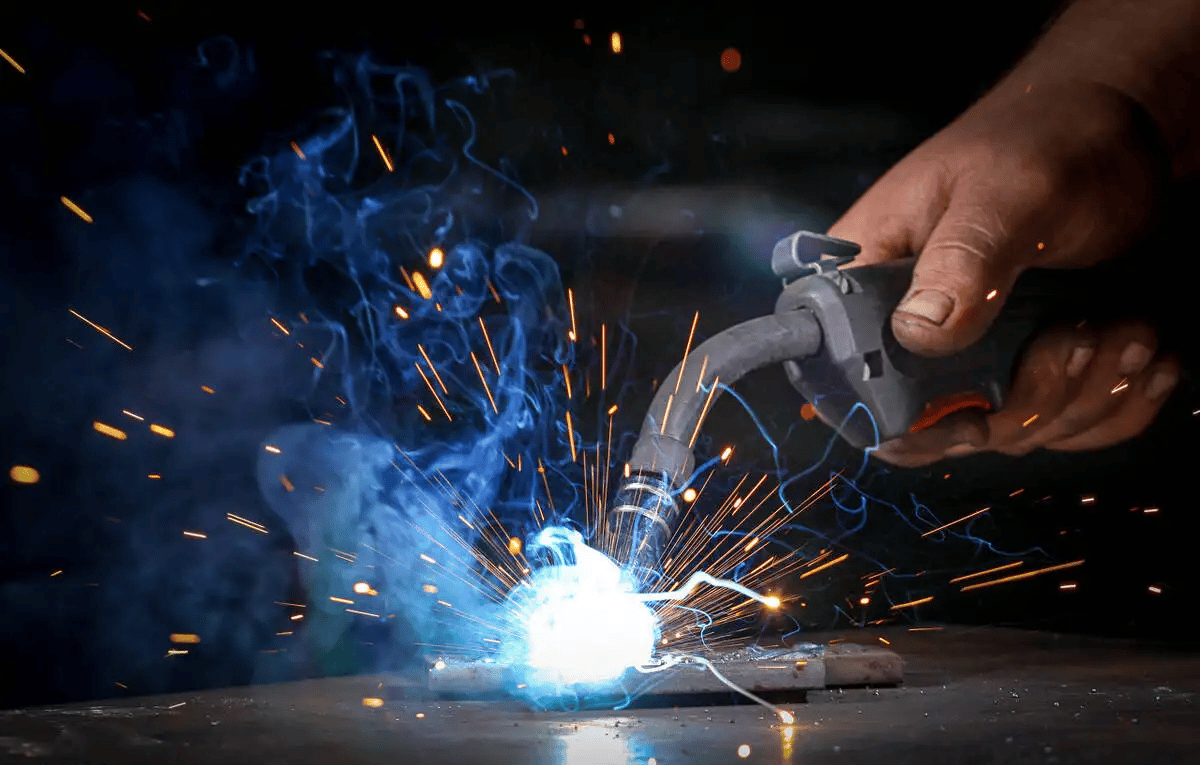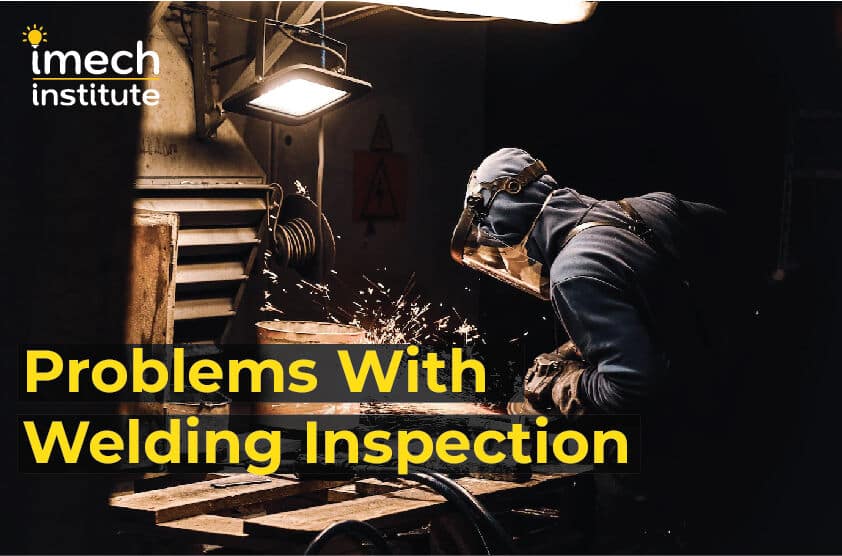The Ultimate Guide to Welding Inspection Racine for Industrial Standards
The Ultimate Guide to Welding Inspection Racine for Industrial Standards
Blog Article
Innovative Approaches to Fillet Weld Inspection and Screening: Enhancing Weld Quality and Compliance Standards
In the world of welding, the high quality and honesty of fillet welds play a critical function in ensuring the structural strength and dependability of numerous commercial parts. With the consistent drive for enhanced effectiveness and conformity with rigid standards, the exploration of cutting-edge strategies to fillet weld examination and screening has actually become vital. As markets develop, the typical methods may no much longer be enough in satisfying the needs of modern-day welding applications. By embracing sophisticated technologies and methods, a brand-new perspective of opportunities emerges in the realm of weld high quality evaluation and adherence to conformity requirements.
Advanced Non-Destructive Screening Approaches
Using state-of-the-art technologies, advanced non-destructive screening techniques play a critical role in making sure the stability and high quality of fillet welds. These methods, such as phased array ultrasonic screening (PAUT) and magnetic bit screening (MPT), deal thorough understandings into the weld's inner framework without creating any type of damage to the material. PAUT, as an example, makes use of multiple ultrasonic aspects to inspect the weld from different angles, providing a thorough visualization of potential defects like lack of blend or fractures.
By utilizing these sophisticated non-destructive testing techniques, weld assessors can accurately analyze the high quality of fillet welds, ensuring conformity with industry criteria and laws. The capability to discover imperfections early on not only improves weld top quality but additionally protects against costly rework or failings in architectural stability, underlining the importance of these ingenious screening methods in welding inspections.
Robotics and Automation in Examination
The combination of robotics and automation has changed the inspection process for fillet welds, enhancing effectiveness and precision in top quality assessment. Robotics use precise control and repeatability in inspecting welds, making sure regular and trusted outcomes. Automated systems can be configured to follow particular inspection paths, making sure comprehensive insurance coverage of welds and lowering the danger of human error.
Robot evaluation systems equipped with sophisticated sensing units can identify and gauge weld features with high precision, supplying in-depth information for evaluation. These systems can identify defects such as fractures, absence of combination, and porosity, making it possible for prompt rehabilitative activities to be taken. Additionally, robotics and automation enable for real-time information collection and evaluation, giving prompt responses to drivers and helping with quick decision-making procedures.
Moreover, using robotics and automation in fillet weld inspection enhances overall performance by minimizing assessment times and raising examination throughput. By enhancing the inspection process, producers can ensure weld high quality and conformity requirements are satisfied efficiently, eventually bring about set you back financial savings and enhanced item quality.
Utilizing Artificial Intelligence for Analysis
Expert system plays a crucial function in enhancing the effectiveness and accuracy of evaluation in fillet weld examination processes. By utilizing the power of AI, examiners can improve the evaluation of weld quality and conformity requirements, bring about a lot more exact and trustworthy outcomes. AI formulas can rapidly process huge amounts of data from weld assessments, detecting problems or variances that might be challenging to determine with the naked eye. This advanced innovation allows real-time tracking of weld high quality, permitting immediate restorative activities to be taken if any type of issues are identified.
Moreover, AI systems can learn from previous assessment data, continuously boosting their ability to identify potential issues and deviations in fillet welds. This adaptive knowing ability enhances the total quality assurance procedure, minimizing the likelihood of human error and making sure that welds fulfill the called for criteria. By incorporating expert system right into fillet weld evaluation, sectors can accomplish greater degrees of efficiency, consistency, and compliance in their inspection methods.
Portable Tools for On-Site Examination
 Enhancing area inspection effectiveness, the fostering of mobile tools transforms on-site evaluation procedures for fillet welds. These devices supply versatility and benefit, enabling inspectors to carry out detailed evaluations in various areas, including challenging or remote environments. Mobile tools such as ultrasonic screening devices, magnetic bit examination devices, and digital radiography systems provide real-time information and high-resolution imaging capabilities, allowing fast decision-making and prompt comments on weld top quality.
Enhancing area inspection effectiveness, the fostering of mobile tools transforms on-site evaluation procedures for fillet welds. These devices supply versatility and benefit, enabling inspectors to carry out detailed evaluations in various areas, including challenging or remote environments. Mobile tools such as ultrasonic screening devices, magnetic bit examination devices, and digital radiography systems provide real-time information and high-resolution imaging capabilities, allowing fast decision-making and prompt comments on weld top quality.One significant advantage of mobile tools is their ability to improve evaluation treatments, reducing downtime and boosting general efficiency. Assessors can quickly deliver these devices to different task sites, removing the need for moving heavy machinery or elements my response to off-site centers. In addition, the transportability of these tools promotes cost-effectiveness by minimizing transport expenditures and accelerating inspection timelines.
In addition, using portable tools for on-site inspection promotes aggressive quality assurance procedures, as assessors can without delay determine and attend to any kind of potential welding flaws or discrepancies. By including these ingenious technologies right into on-site examination practices, welding professionals can make certain conformity with market criteria and boost weld high quality, ultimately resulting in improved architectural stability and safety and security in different welding applications.
Combination of Data Management Solution
Having maximized on-site examination processes with the usage of mobile tools, the following phase includes the seamless integration of data management systems to additionally enhance effectiveness and data evaluation abilities in fillet weld assessment and testing. Welding Inspection Racine. By incorporating information management systems into the assessment procedure, organizations can streamline information collection, storage space, and evaluation. This integration permits real-time tracking of weld top quality, instant identification of problems, and timely decision-making to fix any type of concerns that might occur throughout the evaluation procedure
Information monitoring systems play a vital role in streamlining examination information, assisting in very easy access for authorized employees, and guaranteeing data honesty and safety and security. With the assimilation of these systems, examiners can generate comprehensive records, track historical data for pattern analysis, and boost overall process effectiveness. Moreover, the combination of data administration systems allows smooth interaction in between various stakeholders included in the examination procedure, cultivating cooperation and boosting overall quality control actions. Eventually, the combination of information management systems serves to boost the standards of fillet weld examination and testing, ensuring conformity with industry regulations and improving weld top quality.
Conclusion
Finally, ingenious strategies to fillet weld evaluation and screening have actually significantly enhanced weld high quality and compliance standards. go to this website Advanced non-destructive screening approaches, robotics, automation, man-made knowledge, mobile devices, and information monitoring systems have revolutionized the means weld evaluations are conducted. By utilizing these technologies, sectors can make certain that welds meet the needed top quality criteria and guidelines, ultimately improving general performance and safety in welding procedures.

By utilizing these sophisticated non-destructive screening strategies, weld inspectors can precisely assess the quality of fillet welds, making certain conformity with sector standards and laws. Mobile tools such as ultrasonic testing devices, magnetic fragment inspection equipment, and electronic radiography systems offer real-time data and high-resolution imaging capacities, enabling quick decision-making and prompt comments on weld quality.
Having actually optimized on-site assessment processes via the usage of mobile devices, the following stage includes the seamless assimilation of information management systems to further boost efficiency and data evaluation capacities in fillet weld evaluation and screening (Welding Inspection Racine). Eventually, the combination of information monitoring systems offers to raise the criteria of fillet weld examination and testing, making certain conformity with market laws and enhancing weld quality
 In final thought, article innovative approaches to fillet weld inspection and testing have actually dramatically boosted weld top quality and compliance requirements.
In final thought, article innovative approaches to fillet weld inspection and testing have actually dramatically boosted weld top quality and compliance requirements.Report this page